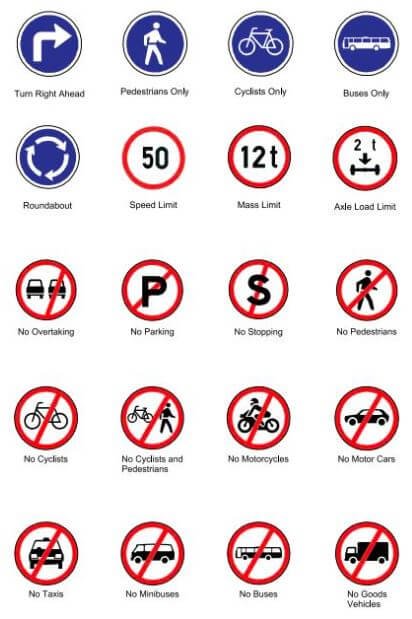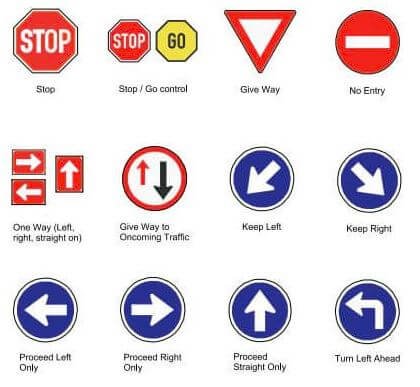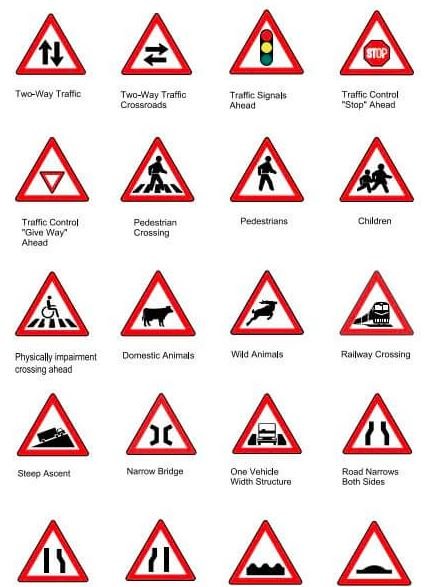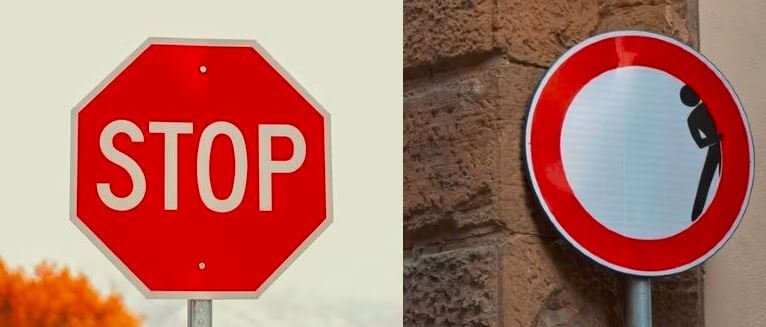Did you know there are numerous NTSA road signs you don’t know their meaning as a driver? And for you to be considered a good driver, you must understand these road signs. Road signs help in maintaining safe driving conditions.
They restrict drivers from colliding with one another, alert drivers of potential danger, and inform pedestrians and drivers of the local rules and regulations. Driving schools are responsible for ensuring that all road users, particularly drivers, know and comprehend these signs.
This is why a driving test is mandated before getting a legal driving license. To avoid getting into accidents, always pay attention to these road signs.
Road signs and Their Meaning in Kenya
Most probably, you’ve come across a road sign which you didn’t know its meaning. Are you interested in learning the different traffic road signs? As a licensed driver, you may have this information, but it isn’t general knowledge for pedestrians.
However, brushing up on your knowledge will improve your understanding and help you to be cautious when driving. When you check the road signal manual, you’ll notice they are in different categories.
Also Read: The Cheapest Cars in Kenya
Categories of Road Signs in Kenya
According to the National Transport and Safety Authority’s Highway code for all road users, there are four categories of road signs. Most road signs and their meaning are categorized based on what they imply.
Each category has a different graphic representation, making it easier for motorists to identify. These categories are.
- Regulatory Signs (Class A)
- Warning Signs( Class B)
- Traffic Light Signals( Class C)
- Carriageway Markings and Kerb Markings(Class D)
Regulatory Signs (Class A)
Kenya’s first-class road signs are known as regulatory signs. They are circular and with white or blue background. This category applies to all circular road signs. But occasionally, you may encounter regulatory signs with an invented triangle or an octagon.
The octagon usually represents the “STOP” sign, which is standard on roads. Drivers must obey this sign regardless of what. Red circles are severe warnings indicating “must not do,” and motorists should never ignore them, while the blue circles exhibit what motorists“must do” on certain roads.


Warning Signs (Class B)
Warning signs are restrictive road signs designed to warn drivers of impending hazards and prepare them to drive cautiously.
Mainly they are red triangles inlaid with black symbols indicating the intended caution exclusive of two chevron signs consisting of stylized arrows. Some of typical Kenya’s road warning signs include:
- The road narrows from the right and left ahead of road signs.
- Traffic signals ahead signs
- Falling rocks ahead road signs
- Speed bump signs
- River bends crossing signs
- Uneven roads surface ahead signs
- Blinds spots signs
- Traffic merging head signs
- Riverbanks with no barriers ahead sign


Class C-Traffic Lights (Class C)
The traffic light category has several signs representing various indications and warnings to road users. For example, green, amber, and red must be obeyed at all junctions to maintain good traffic flow and avoid confusion on heavily trafficked roadways.
The Traffic Act (p. 218) specifies the order in which the lights are displayed to control movement as follows:
Red
All vehicles approaching red light must halt before crossing the stop line. As a driver, you shouldn’t transit the stop line unless the green light turns on, and if doing so won’t risk the lives of other road users.
Amber and Red Light at the Same Time
After an appropriate duration, the traffic light turns amber on top of the red light that had previously lit to stop the motorist. As a driver, you shouldn’t move because the red light is still on, and its effect is still active.
You can only drive after the amber and the red light turns off.
Green
These lights indicate movement. When it’s on, the red and amber are off. You can approach the intersection, but you should observe other traffic regulations. If there are traffic officers at the junction, you must adhere to their instructions.
Amber
The amber light turns on alone, and it follows the green light. It indicates that all moving vehicles should stop. The only cars allowed to move are those closer to the stop line, and stopping their motion would be risky.
These four combinations are among the essential rules. However, it’s highly advised you go through all the traffic regulations and adhere to them to avoid causing accidents.
You may occasionally encounter traffic lights that include additional arrows and bulbs to aid in directing you. For example, a green arrow pointing to the left signals the motorist to move to that road’s section regardless of the state of other light. The arrow might be red in the opposite case, which is also correct.
Carriageway And Kerb Markings(Class D)
Class D NTSA road signs are usually painted on the Kerbs and road surfaces. In Kenya, they are often in white and yellow and either broken ( dashed) or continuous ( solid).
Some are painted in pairs( double lines), and sometimes, a single line is used. Longitudinal lines are set along the traffic flow direction. Transverse lines are placed across the road, perpendicular to the direction of traffic flow.
Here they are:
White Color
White lines on the kerbs or the carriageways are employed in all other cases. Solid lines suggest a strict prohibition on crossing or straddling them. Solid longitudinal lines are restrictive, whereas broken ones are permissive.
Double continuous lines imply high restriction levels- you shouldn’t straddle or cross them. Continuous longitudinal lines usually are used to restrict overtaking near steep ascents and hazardous bends.; therefore, you shouldn’t straddle or cross them.
Additionally, this mandate is more robust for continuous double lines. If the broken line is on the left of the solid line and two lines are paired, you are allowed to cross or straddle them; otherwise, you are not permitted to do so.
Based on the number of vehicles we observe overtaking along or driving astride, continuous and double continuous lines across the nation indicate that these regulations are intentionally disregarded or poorly understood.
Be careful, though there are traffic officers who make an effort to enforce rules in some of these areas, especially on busy intercity roads. Contrarily, you are permitted to straddle or cross broken longitudinal lines, provided doing so doesn’t interfere with or risk other road users’ safety.
For instance, you may do so to take a different road, overtake slow-moving vehicles, or shift lanes.
Yellow Color
Yellow longitudinal lines are often used to segregate vehicles proceeding in opposite directions. You should, therefore, constantly keep them to your right. A helpful tip, if you ever notice a yellow line on your left-hand side, it’s an obvious indication that you’re driving on the wrong road’s side.
Yellow markings on kerbs restrict parking or stopping along such kerbs.
Kerb Markings
A solid yellow line on a kerb, in particular, restricts all automobiles from stopping beside the line unless it’s necessary to adhere to traffic movement or another traffic sign’s requirements; allow a passenger to alight or board the car, or allow luggage to be offloaded or loaded in the car.
Pedestrian Crossing ( Zebra Crossing)
Road markings comprising white longitudinal lines extending across the road and the blue traffic sign “Pedestrian Crossing Place” imply a pedestrian crossing area. Hence it requires all oncoming vehicles to give way to pedestrians crossing the area marked by the strips.
Similarly, a road marking comprising two white transverse lines and a traffic sign reading “Stop, Children Crossing” mandates all oncoming vehicles to stop and not enter the space between the lines if doing so will risk or interfere with a pedestrian.
Bottom Line
As stipulated by NTSA, all pedestrians and motorists must adhere to and abide by the road signs and their meaning. NTSA road signs help in maintaining safe driving conditions.
Generally, they are meant to warn of impending hazards, restrict drivers from colliding with one another, and inform pedestrians and drivers of the local rules and regulations.







